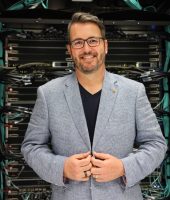The first survey of the entire southern sky was conducted by CSIRO’s Australian Square Kilometre Array Pathfinder (ASKAP) telescope in record speed and detail, creating a new atlas of the Universe.
Using ASKAP at CSIRO’s Murchison Radio-astronomy Observatory (MRO) in outback Western Australia, the survey team observed 83 per cent of the entire sky. The initial results are published today in the Publications of the Astronomical Society of Australia.
This record-breaking result proves that an all-sky survey can be done in weeks rather than years, opening new opportunities for discovery.
Using software specially created for ASKAP by CSIRO and Pawsey’s Galaxy supercomputer, the newly created map of the Universe was completed in just 300 hours, showcasing approximately three million galaxies – about a million of which we’ve never seen before.
There were 903 fields, each with 36 beams, that needed to be calibrated and have images made and catalogues constructed only possible with the large amount of computational capability available at the Pawsey Supercomputing Centre.
Pawsey is an integral part of the ASKAP observatory. The raw data from the telescope is streamed down to the Centre in almost real-time.
The Pawsey supercomputers and CSIRO software were fundamentally required to produce the Rapid ASKAP Continuum Survey (RACS). Using a radio telescope, the RACS team processed the ‘raw’ data from the telescope to reconstruct an image using the software ‘ASKAPsoft’, designed to produce science-ready images from ASKAP data using the advanced image processing techniques,
RACS data is freely available to the public and the astronomy community via the CSIRO data portal CASDA.
This census of the Universe will be used by astronomers around the world to explore the unknown and study everything from star formation to how galaxies and their super-massive black holes evolve and interact.
Bringing together world-class infrastructure with scientific and engineering expertise ASKAP is helping unlock the deepest secrets of the Universe.
Read the full story on the CSIRO website.


